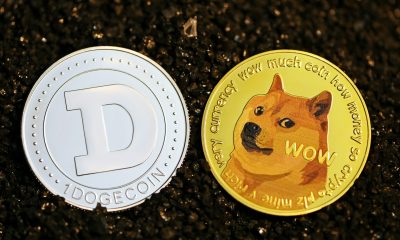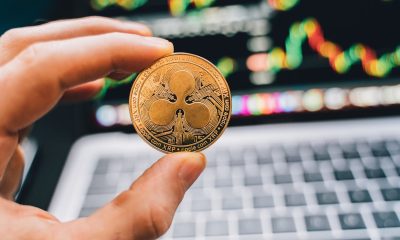Markets
Global Finance Enters a Period of Unprecedented Upheavals
The upcoming BRICS summit will announce the creation of a common BRICS currency, marking a giant leap towards “de-dollarization.” Despite its decline in reserves, the US dollar still serves as the world’s reserve currency. The emergence of the BRICS currency will disrupt it and the global bond system, reducing the dependence on Western countries and stimulating bond markets in emerging economies.

We now know that during the upcoming BRICS summit, which will take place in Johannesburg (South Africa) between August 22 and 24, the member countries of the group will announce the creation of a common BRICS currency, which, reminiscent of Bretton Woods (1944), will probably be backed by gold.
The BRICS – Brazil, Russia, India, China, and South Africa – account for nearly 40% of the world’s population, and 25% of the global GDP, and their economic scale has officially surpassed that of the G7 this year. Naturally, the imminent introduction of a common BRICS currency provides material for analyzing a new phase of the highly publicized “de-dollarization” phenomenon.
BRICS Currency to Spark Bond Imbalances
The announcement of the creation of a common BRICS currency is likely to lead to multiple bond imbalances at first, rather than immediately undermining the dollar’s status as the reserve currency of reference.
It is worth noting here that China – the world’s workshop – with a GDP of over 17 billion dollars, currently has a currency with an insignificant position among international reserve currencies. In fact, the yuan represents only 2% of the world’s foreign exchange reserves, compared to about 20% for the euro and 60% for the dollar.
Being a commercial giant is not enough to make a currency a reference among international currencies, although, manifestly, supremacy in exports – especially when it comes to energy or raw materials rather than services – necessarily favors the monetary domination of a country or bloc.
Even though, for the first time in the history of the modern international monetary system resulting mainly from the signing of the Bretton Woods agreements, Saudi Arabia has granted itself the freedom to transition from oil while breaking free from the American currency, and despite the fact that the share of the US dollar in central banks’ reserves has dropped from 70% to 59% in 2021, it still has many years of preeminence ahead.
Following the emergence of a common BRICS currency, we should also expect a dampening of the inevitable decline of the United States due to the power retained by its currency.
New BRICS Currency Will Lead to Initial Monetary Instability
Global finance enters a period of unprecedented upheavals, which will only be exacerbated by the introduction of a BRICS currency.
Some changes, made possible by digital tools, will increase and make monetary instability phases more regular. The purchase of US sovereign debt by the Federal Reserve, the massive quantitative easing carried out in recent years by the European Central Bank, the future issuance of a digital euro by the latter, and the growing role of cryptocurrencies in global investments represent several elements that, because they lead to unmanageable situations, will logically lead to a departure from the exuberances of financialization.
Production systems, as well as real assets (mainly those whose value is based on underlying utility, such as real estate), will then need to be systematically backed by credible currencies, which will likely include the new BRICS currency. It is in this sense that, for various reasons allowing it to maintain its credibility, the dollar will remain an international reference currency.
Bond Exchanges
On the other hand, the emergence of the BRICS currency will probably drastically reduce the mechanized practice of a very advantageous address for Western countries.
Our economies are organizations based on a bond system. For several decades, many of the countries from which we obtain energy or raw materials procure, with a portion of the currency we export to them in exchange, government bonds that we issue. This is notably why a considerable amount of France’s foreign debt is held by Chinese lenders. In this sense, the BRICS currency will disrupt the global bond system.
With a common BRICS currency, there will be, for example, little apparent reason for countries like India and Russia to establish usual bond exchanges between them, similar to what France had with Russia until now. It is also likely that the appearance of this BRICS currency on the market will make the purchase of government bonds of BRICS member countries more popular among Western investors.
Therefore, before “de-dollarizing” the world, it is crucial to expect that this new currency will contribute to transferring the countries that lend and those that issue debt into the bond chessboard.
The circulation of the euro as a common currency has increased foreign investors’ acquisition of bonds issued by eurozone member countries, simply because buying debt securities of a state denominated in a currency used by a group of powerful countries is reassuring. The BRICS currency will thus stimulate the bond market of several major powers that have become euphemistically referred to as emerging economies.
__
(Featured image by Essow K via Pexels)
DISCLAIMER: This article was written by a third party contributor and does not reflect the opinion of Born2Invest, its management, staff or its associates. Please review our disclaimer for more information.
This article may include forward-looking statements. These forward-looking statements generally are identified by the words “believe,” “project,” “estimate,” “become,” “plan,” “will,” and similar expressions. These forward-looking statements involve known and unknown risks as well as uncertainties, including those discussed in the following cautionary statements and elsewhere in this article and on this site. Although the Company may believe that its expectations are based on reasonable assumptions, the actual results that the Company may achieve may differ materially from any forward-looking statements, which reflect the opinions of the management of the Company only as of the date hereof. Additionally, please make sure to read these important disclosures.
First published in Le Point. A third-party contributor translated and adapted the article from the original. In case of discrepancy, the original will prevail.
Although we made reasonable efforts to provide accurate translations, some parts may be incorrect. Born2Invest assumes no responsibility for errors, omissions or ambiguities in the translations provided on this website. Any person or entity relying on translated content does so at their own risk. Born2Invest is not responsible for losses caused by such reliance on the accuracy or reliability of translated information. If you wish to report an error or inaccuracy in the translation, we encourage you to contact us.

-

 Impact Investing1 week ago
Impact Investing1 week agoFrance’s Nuclear Waste Dilemma Threatens Energy Future
-

 Fintech6 days ago
Fintech6 days agoKraken Launches Krak: A Game-Changing Peer-to-Peer Crypto Payment App
-

 Africa2 weeks ago
Africa2 weeks agoAgadir Welcomes Nearly 570,000 Tourists by May 2025
-

 Impact Investing2 days ago
Impact Investing2 days agoEuropeans Urge Strong Climate Action Amid Rising Awareness and Support

























